
- Blog
Project design data management strategy is pivotal for successful cross-functional project development process. Engineering data management helps teams operate more efficiently by reducing data access administration time and ensuring accessibility to up-to-date data for all team members. Learn more about the Key Aspects of Engineering Data Management on our blog.

- Blog
Pizzato Elettrica, a renowned industrial safety company is dedicated to promoting a culture of safety in various industries. By selecting CR-8000 and DS-CR, Pizzato has seamlessly integrated its electronic design environment with its PDM infrastructure.

- Blog
System design engineers must balance the demands of time and cost efficiency as well as accuracy under tight deadlines. When projects require collaboration between distributed people and teams, communication issues can make collaboration a challenging issue.

- Blog
A modular product approach is an established way of improving the calculating and realizing the value of investment goods. Yet modular product initiatives often fail to live up to expectations because of poor coordination between engineering disciplines. To deliver on the promise of a modular product architecture strategy, companies need to create a number of prerequisites in organization, process, and infrastructure.

- Blog
From our everyday life, we know many examples where our expectations and reality do not quite match. PCB design data management is no exception.

- Blog
Today's day-to-day business in data management can sometimes be a real challenge. Who has the latest version? Where is it stored? Who is currently working on it? Manual versioning on a file system is not only difficult to handle but also highly error prone. However, with the DS-E3 Starter Package, some pitfalls can be eliminated.

- Blog
The world that we all live in has been changed by the Covid-19 outbreak. Stay at home orders and social distancing significantly impact the way we live our daily lives. Working remotely presents a whole new set of challenges for engineers and the companies that employ us. We now work on company supplied-laptops that typically connect back to the corporate network through a VPN.
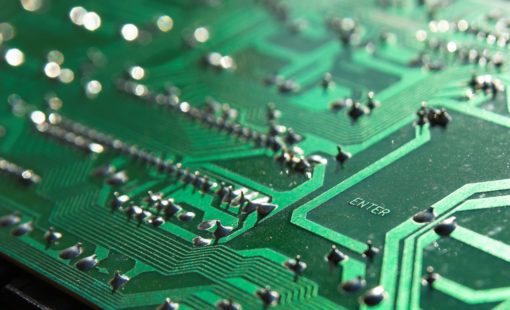
- Blog
In today’s global value chains, data exchange and re-reuse are vital to support collaboration and productivity. But most data formats are proprietary. For any organization with an extensive database of ECAD data, the need for data migration will eventually arise.
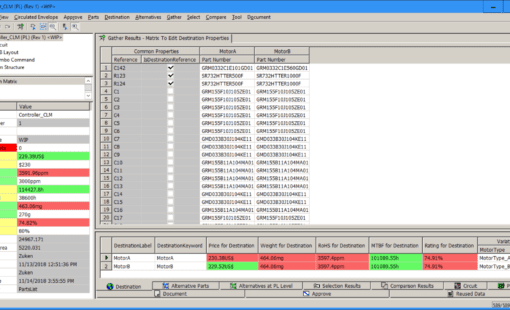
- Blog
The destination matrix enables convenient viewing and editing of a component list that has part variants.
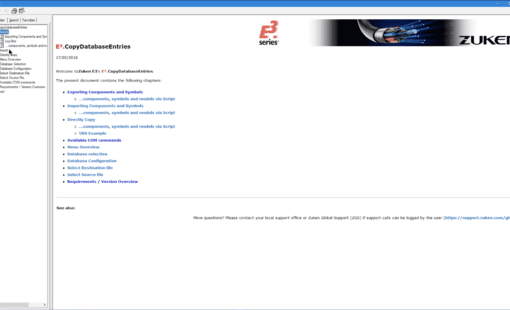
- Blog
Component management is a big part of the design process spanning multiple library instances. The library management tools like E3.CopyDatabaseEntries are available in E3.series to automate much of the manual work. CopyDatabaseEntries has been a trusted tool for many years for a large number of E3.series users. The biggest advantage of the tool is ...
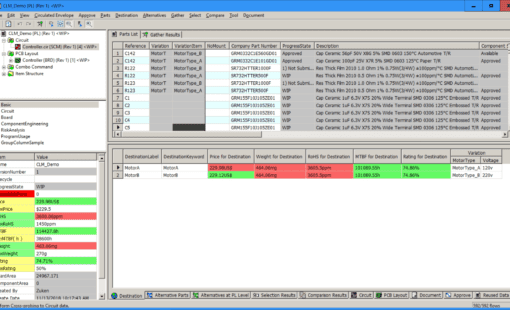
- Blog
Variation Management provides the means for the user to define the part numbers and mounting status of parts to be mounted based on the product variation: delivery destination and model. Furthermore, Variant Management applications allow the user to easily switch views and export parts lists based on the destination.
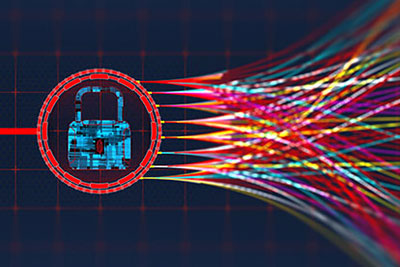
- Blog
Take a walk in the engineer’s shoes: I need an 80 MHZ network controller for my new project and I found one in the PLM/PDM system. That was easy. Now a quick check in the procurement database to do a price and availability check. So far so good, now on to the component engineering system to see if there are any possible lifecycle issues with a 10-year minimum requirement. It’s my lucky day, no issues and it’s a company-preferred part with an ECAD library instance.

- Blog
We broke new ground for many attendees by opening our Zuken Innovation World Americas 2018 conference with a keynote on Model-Based Systems Engineering (MBSE). We were fortunate to have an expert in the field speak: Enrique Krajmalnik, CTO of No Magic, an industry leader in MBSE.

- Blog
Industry 4.0, a.k.a. the Fourth Industrial Revolution (IR), is a hot topic because most of us are either taking our first steps in this world, or we’re preparing to. Clearly, earlier industrial revolutions were all about making better use of resources (e.g. burning coal to make steam), people (e.g. workers in factories) and, latterly, electricity and computer-controlled automation. For each revolution, the companies that did well were early adopters of the technology and practices of the day, and they recognised waste when they saw it.

- Blog
Because of its influence on weight and cost, accurately digitizing the wiring system is a priority when implementing a digital twin strategy in the automotive and transportation sectors. It’s also one of the most challenging aspects of this task.

- Blog
There is one thing that all design engineers will agree on: creating and gathering all the required data for PLM is error-prone and can be a royal pain. We all understand the value of releasing our design data to the corporate PLM system but our design process dictates multiple release points, and each one has a different purpose and data requirements.